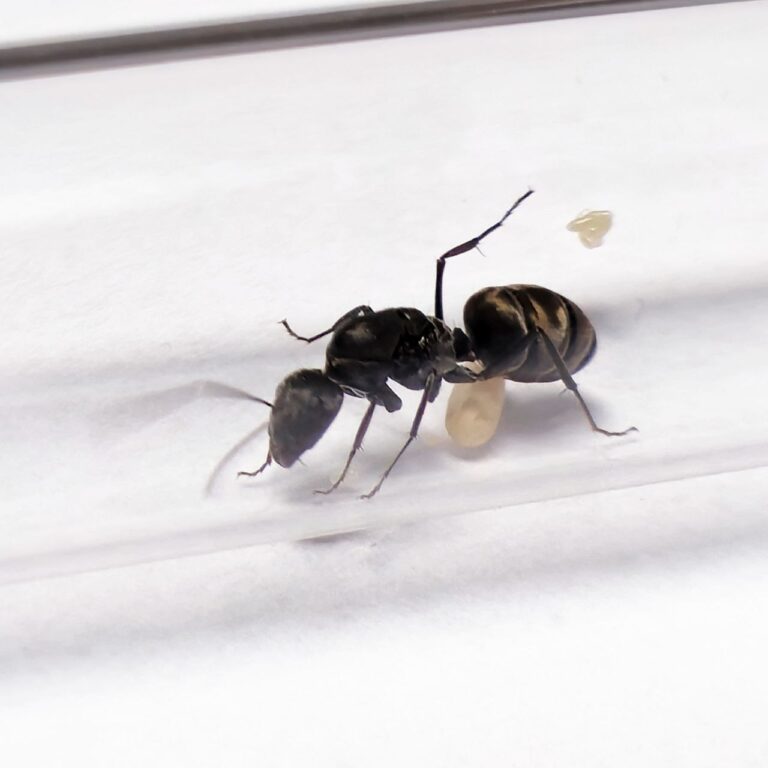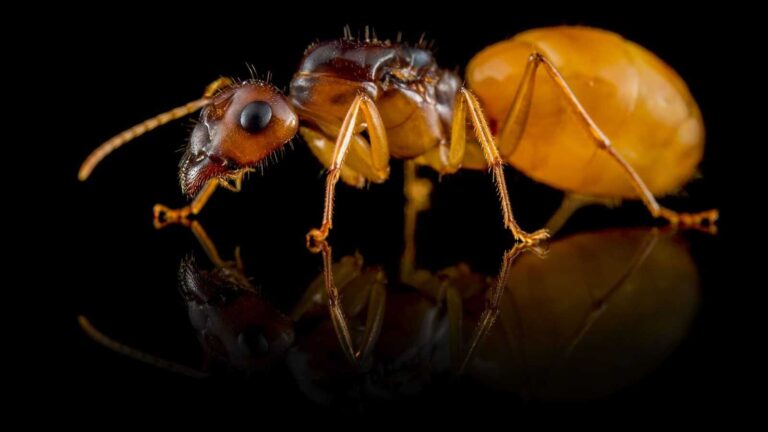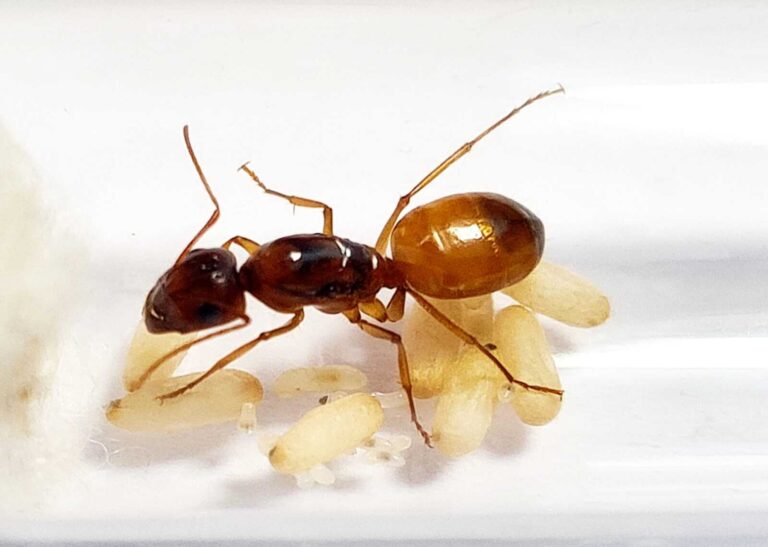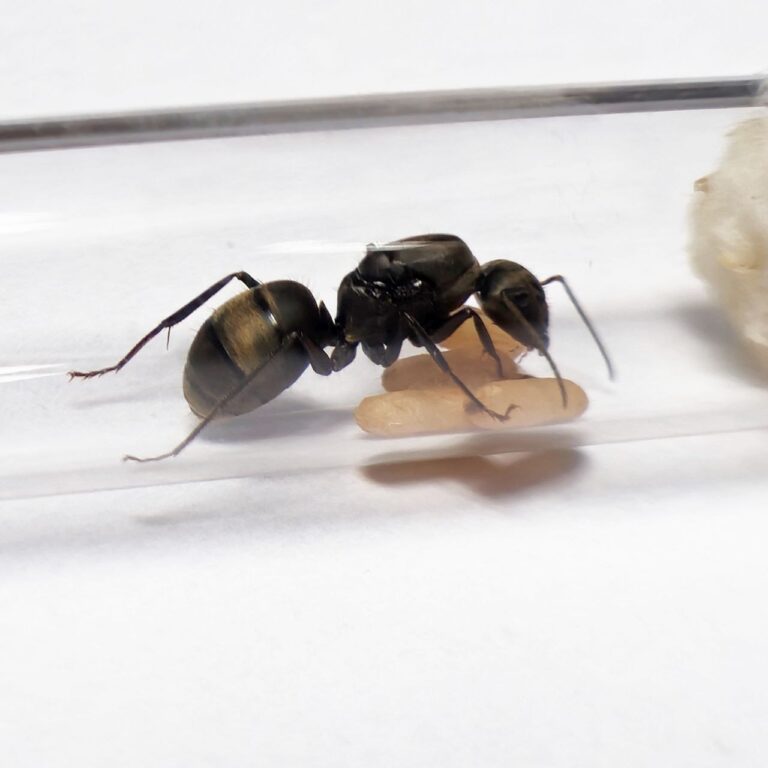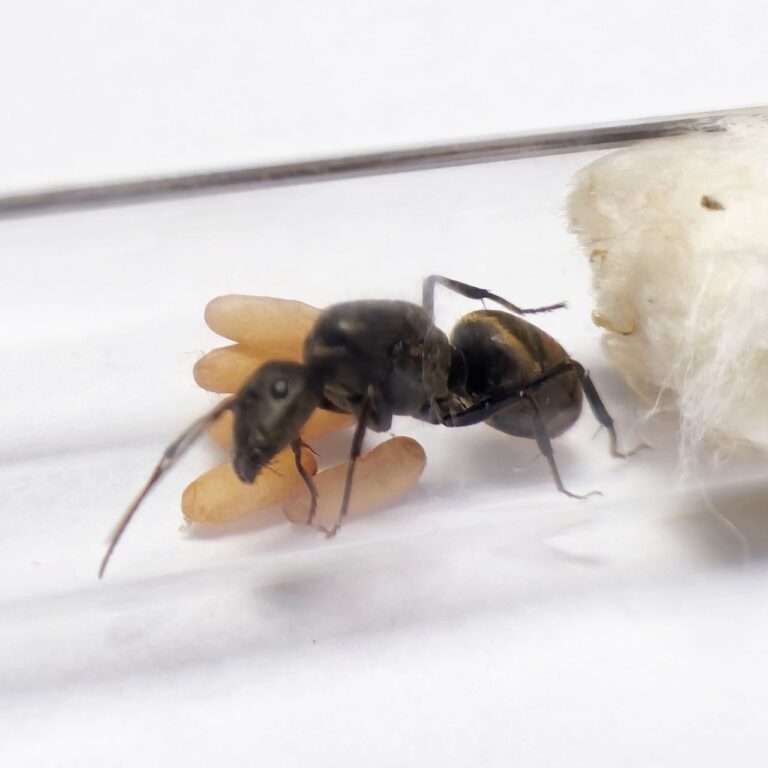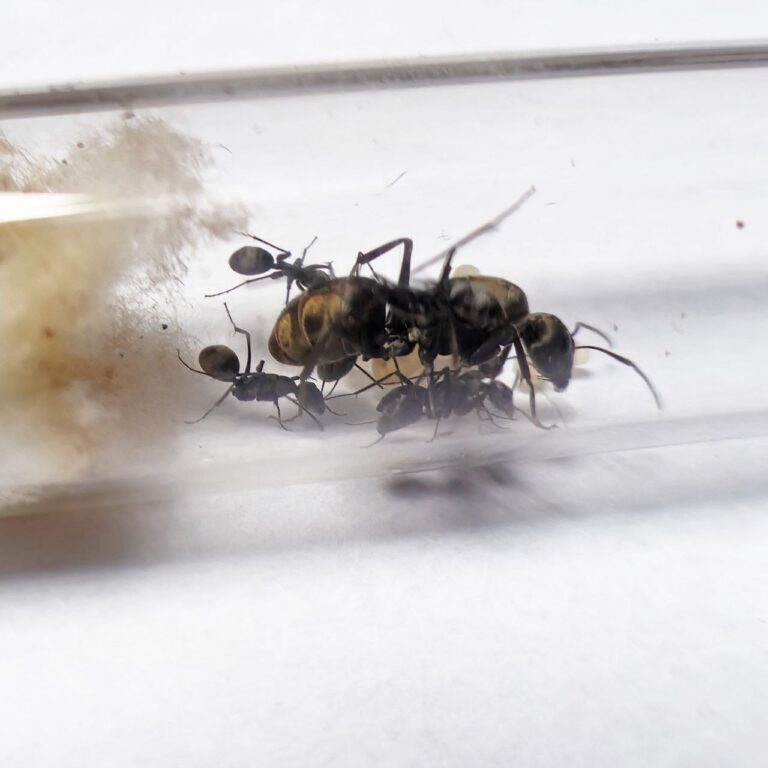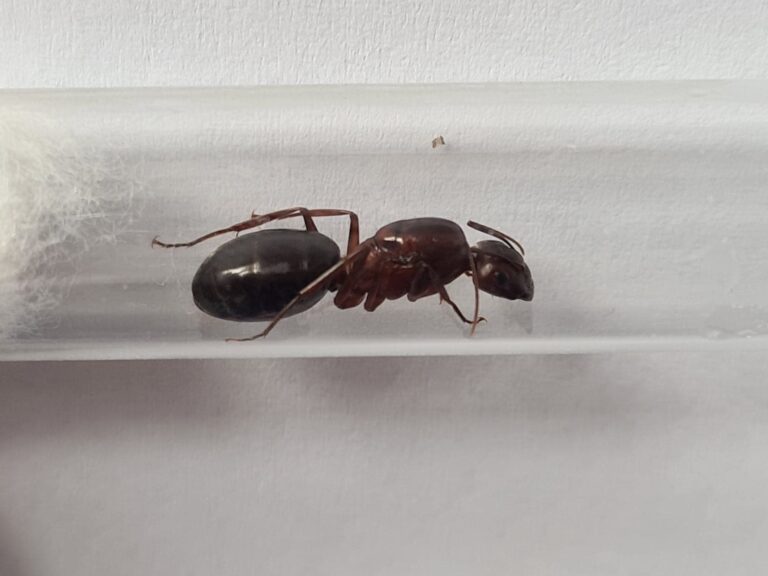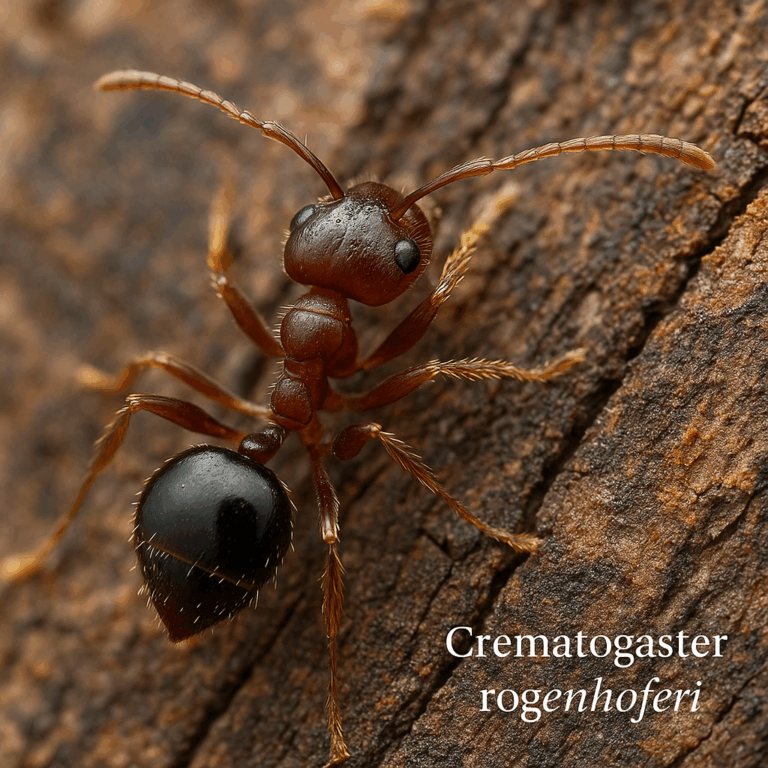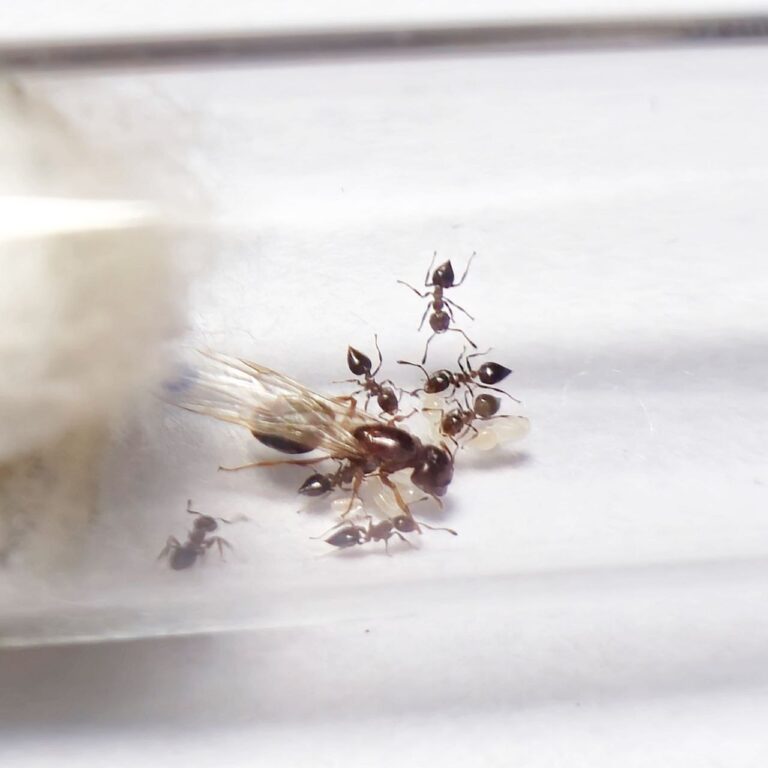Camponotus friedae is a large, slow-growing ant species of western Asia. Known for its polymorphic workers and striking coloration, it typically nests in dry wood or soil. Colonies are calm, nocturnal, and develop gradually, but queens are long-lived and highly resilient. Ideal for experienced keepers who prefer large, elegant ants with stable colony dynamics and moderate activity.
Showing all 8 results
Product categories
Stock status
Filter by price
Behavior
Number of workers
Origin
Filter by size
Wintering
Asia
Camponotus dolendus
189,90 zł – 359,90 złPrice range: 189,90 zł through 359,90 złCamponotus dolendus is a monogynous ant species with colony sizes reaching up to 8,000–12,000 workers in mature nests. They are known for their moderate to fast development speed, depending on environmental conditions.
Select options
This product has multiple variants. The options may be chosen on the product page
Camponotus fedtschenkoi
Rated 5.00 out of 5
89,90 zł – 269,90 złPrice range: 89,90 zł through 269,90 złCamponotus fedtschenkoi is a monogynous ant species with a colony size of around 4000 workers. Its development speed is considered medium. The queen measures 12-14mm, workers range from 5-9mm, and majors measure 10-15mm. Workers and soldiers are typically yellow in color, but some soldiers may have a black head or both a black head and chest. Queens have a black or brown head and breast with a yellow belly.
Select options
This product has multiple variants. The options may be chosen on the product page
Camponotus friedae
319,90 zł – 449,90 złPrice range: 319,90 zł through 449,90 zł
Select options
This product has multiple variants. The options may be chosen on the product page
Camponotus pseudolendus
249,90 zł – 489,90 złPrice range: 249,90 zł through 489,90 złCamponotus pseudolendus is a monogynous ant species with colonies of up to 10,000 workers. They develop at a moderate to fast pace and show clear polymorphism. Queens typically measure around 17–19 mm, workers range from 5 to 11 mm, and majors can reach 12–14 mm.
Select options
This product has multiple variants. The options may be chosen on the product page
Camponotus rufoglaucus
159,90 zł – 319,90 złPrice range: 159,90 zł through 319,90 złCamponotus rufoglaucus is a monogynous ant species with colonies of up to 8,000–10,000 workers. They show moderate to fast development and strong polymorphism. Queens measure 16–18 mm, workers range from 5 to 10 mm, and majors can reach 12–14 mm.
Select options
This product has multiple variants. The options may be chosen on the product page
Camponotus tonkinus
599,90 zł – 1099,90 złPrice range: 599,90 zł through 1099,90 złCamponotus tonkinus is a monogynous ant species with colonies reaching up to 15,000 workers. They exhibit a moderate to fast development speed. The queen measures approximately 17–19 mm in length, while workers range from 6 to 9 mm. Their head and gaster are black, contrasting with a reddish-brown thorax, giving them a distinctive bicolored appearance. They feed primarily on insects, sugary liquids, fruit, jelly, and protein-rich foods such as cooked chicken or egg.
Select options
This product has multiple variants. The options may be chosen on the product page
Camponotus turkestanicus
89,90 zł – 199,90 złPrice range: 89,90 zł through 199,90 złThe Camponotus turkestanicus is a monogynous ant species with colony sizes of up to 2000 workers. They have a medium development rate and their queen measures 12-14 mm, while workers measure 7-12 mm. They are brown in color and their diet consists of food insects, syrup, fruits, vegetables, jelly, and cooked chicken without salt.
Select options
This product has multiple variants. The options may be chosen on the product page
Crematogaster rogenhoferi
99,90 zł – 199,90 złPrice range: 99,90 zł through 199,90 złCrematogaster rogenhoferi is a monogynous ant species with dynamic and rapidly expanding colonies that can reach sizes of up to 15,000–20,000 workers under optimal conditions. This species is known for its fast brood development and high activity levels within the nest and foraging areas.
Select options
This product has multiple variants. The options may be chosen on the product page
Recently Viewed Products



